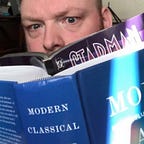The Mystery of particle-wave duality: Or why footballs don’t diffract into goals
One of the most astounding and controversial outcomes of the early investigation of quantum physics was the discovery that light acts as both a particle and a wave, the so-called particle-wave duality of matter. Physicists went further though, discovering it was not just light that behaved as if it were a particle and a wave depending on the conditions under which it was observed. All matter, up to a certain limit, behaves this way. How could something be both a particle and a wave? The answer is that if it is neither of course. All of this poses a further question if solid-matter has wave-like properties, why don’t we see travelling objects diffract around stationary objects in their path?
To answer this question, we’ll first consider the conclusions that had been reached about light and matter at the turn of the twentieth-century and then examine the findings and the physicists that turned these conclusions and our very understanding of nature on its head.
Light as a wave?
As of 1905, physicists had settled on the idea that light was wave-like in nature. This was despite the fact that the father of physics, Newton, had strongly believed that light travelled in ‘corpuscles’. It was Huygens and others at the start of the 19th Century that clearly…
